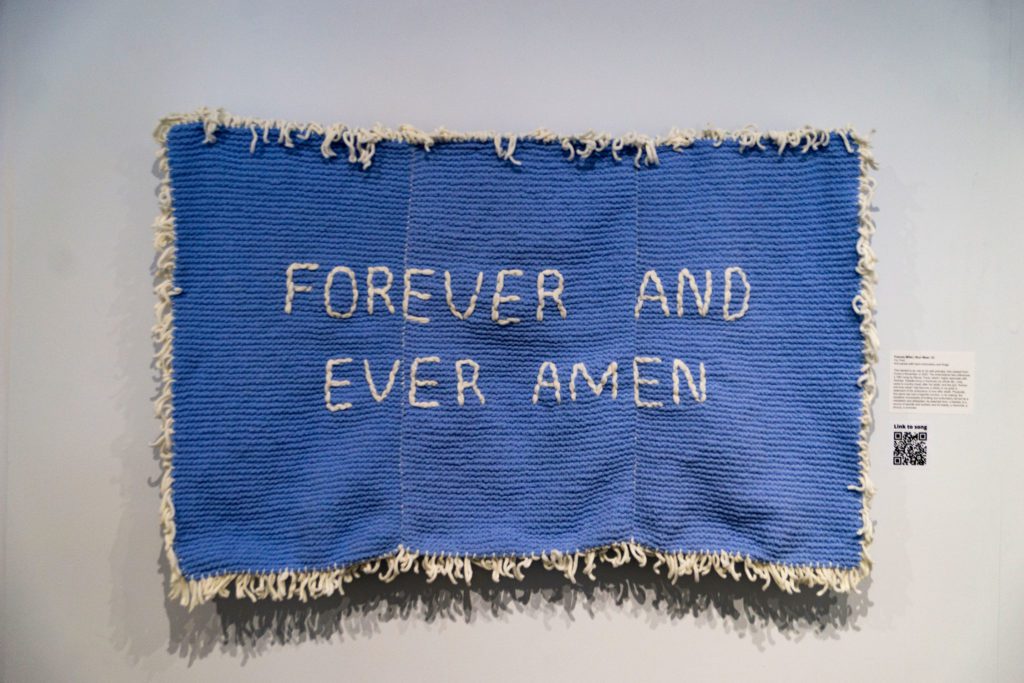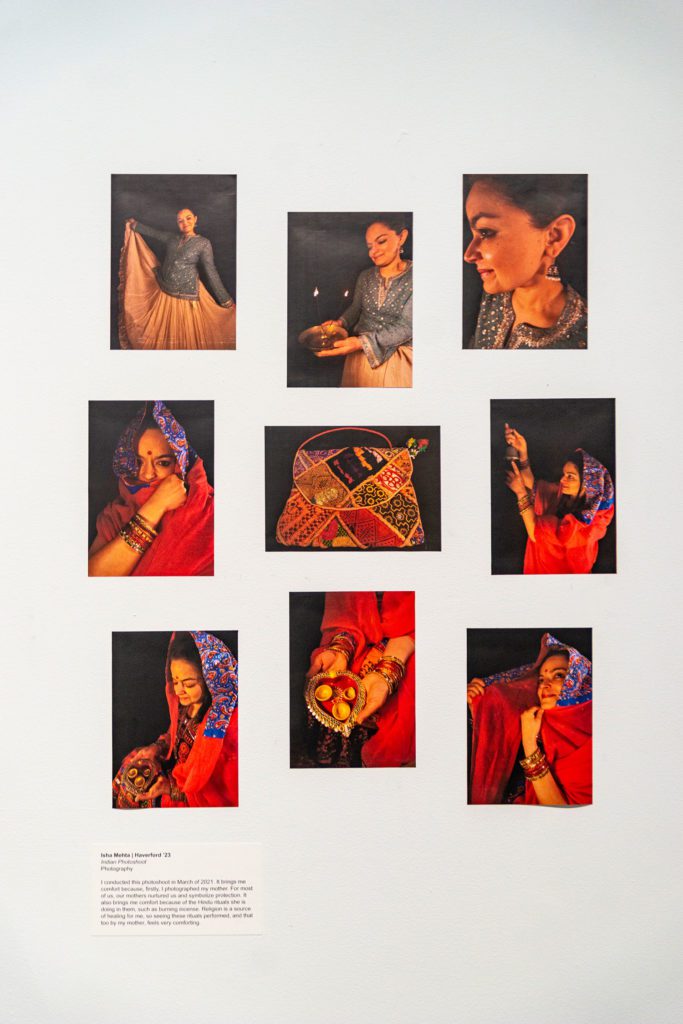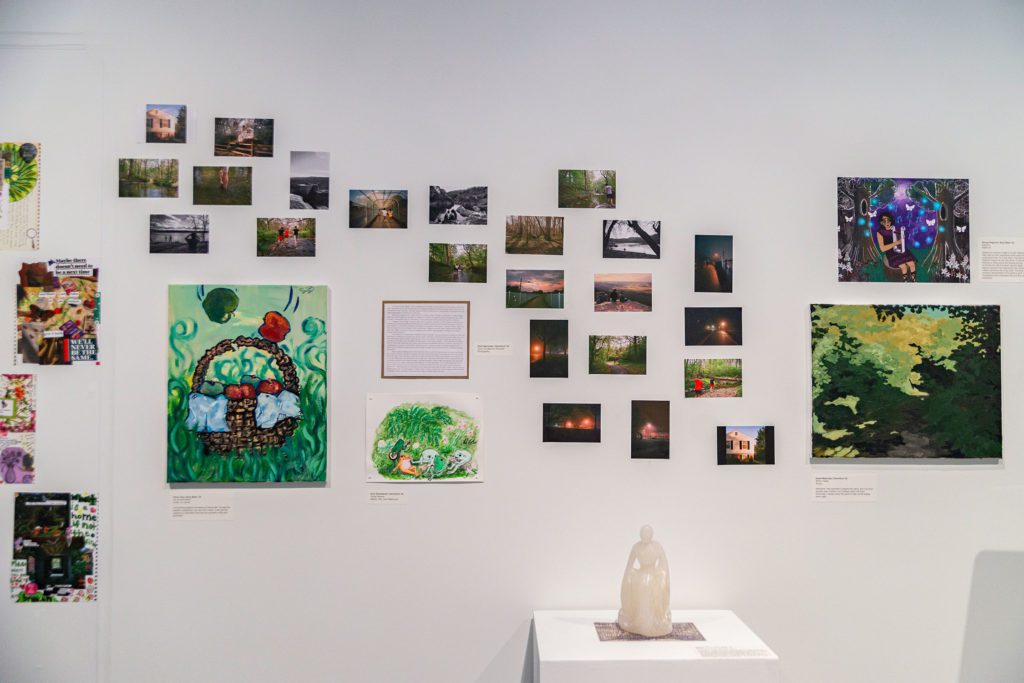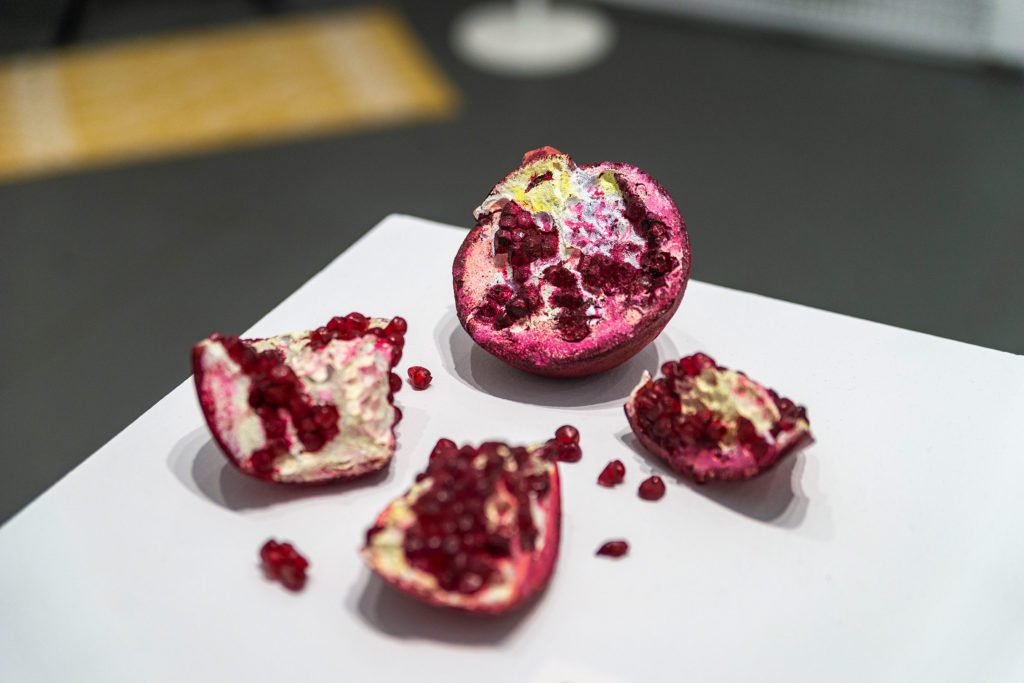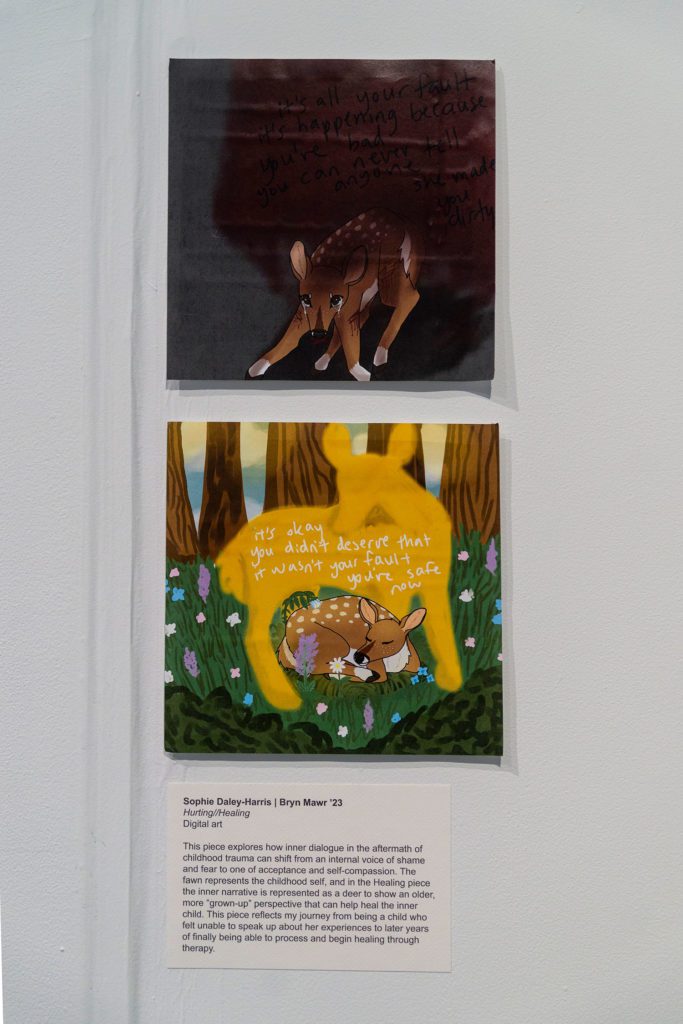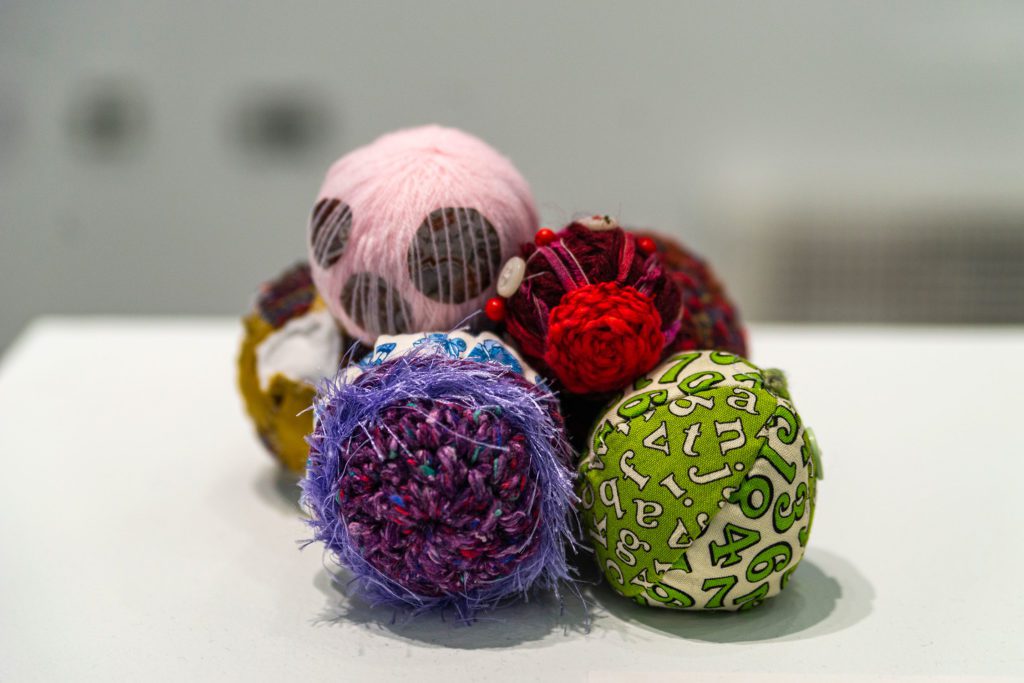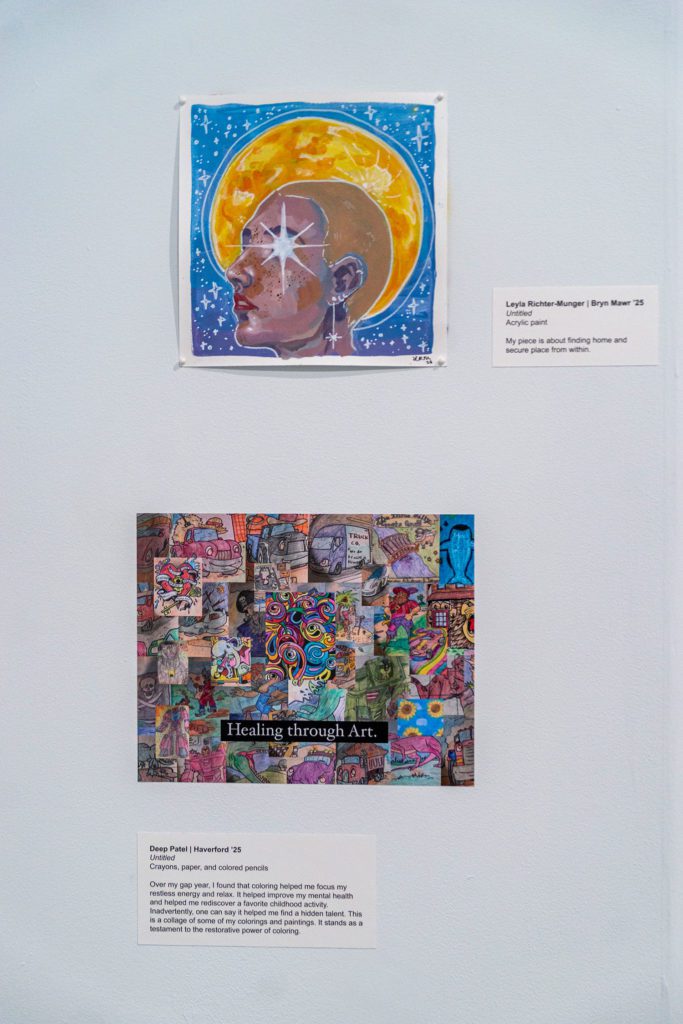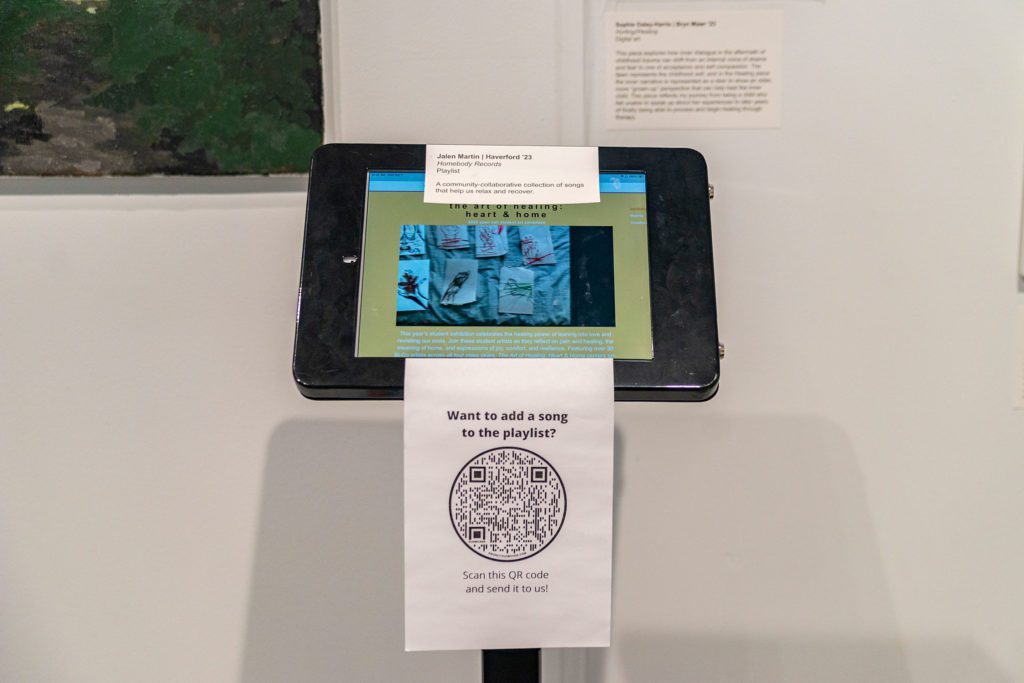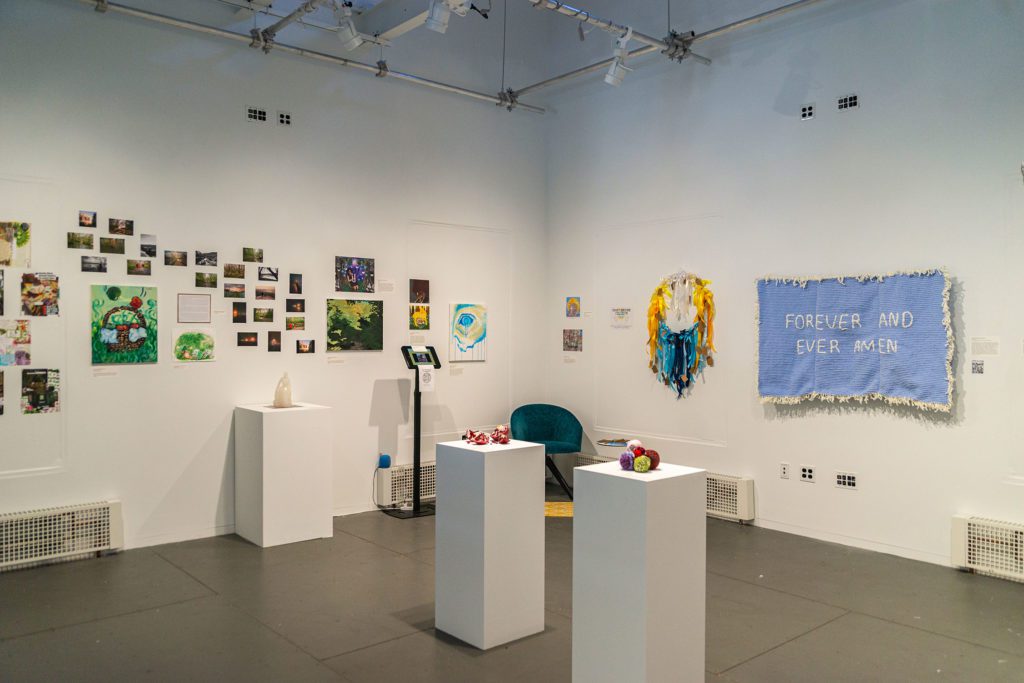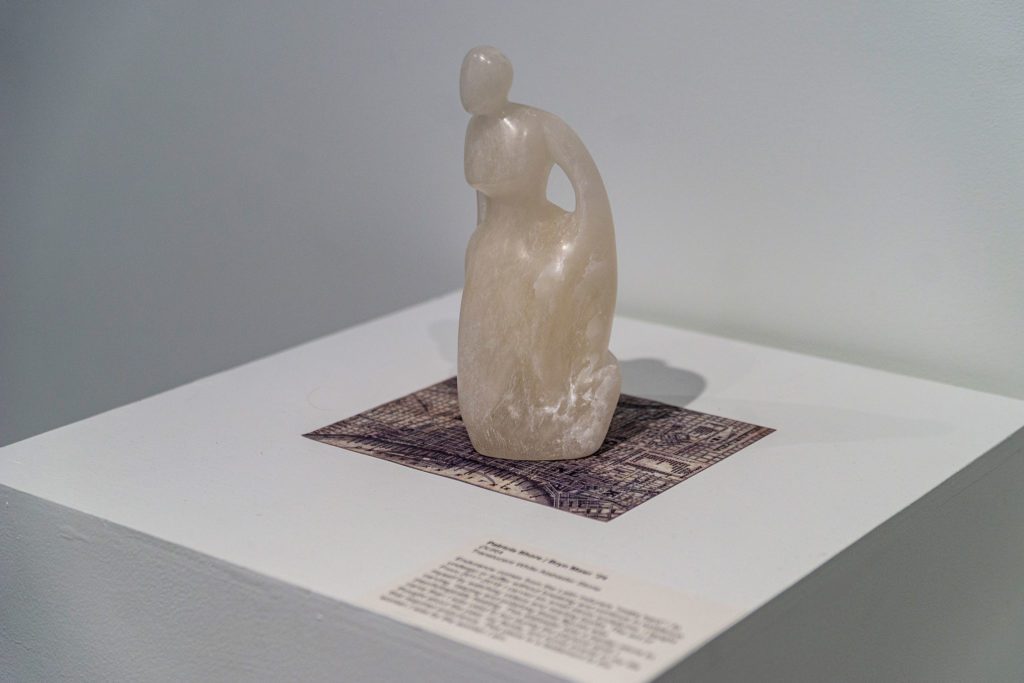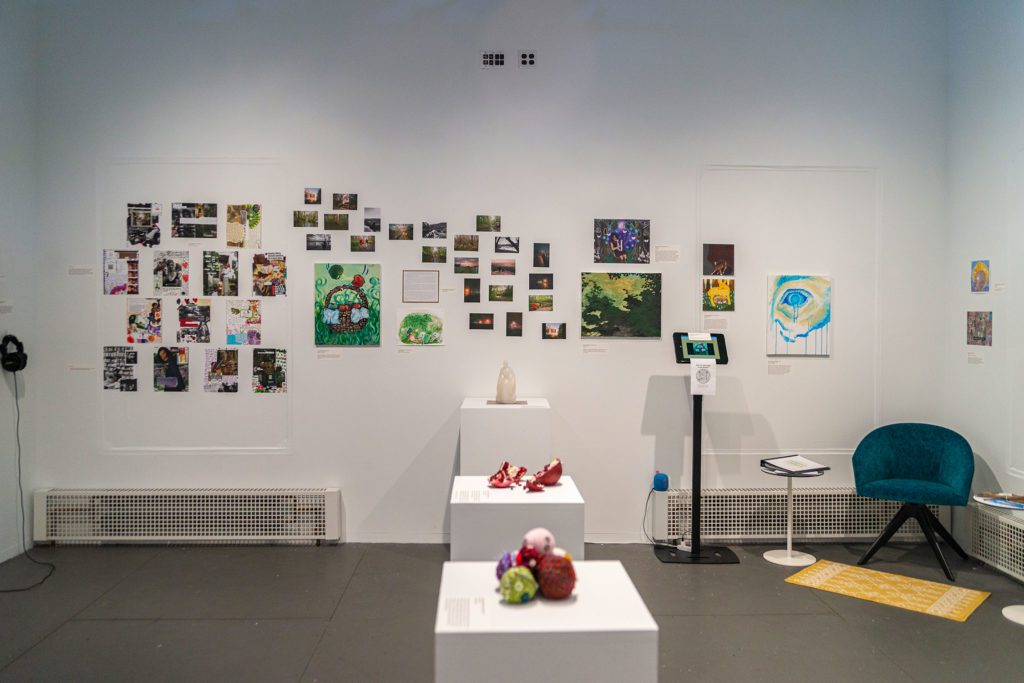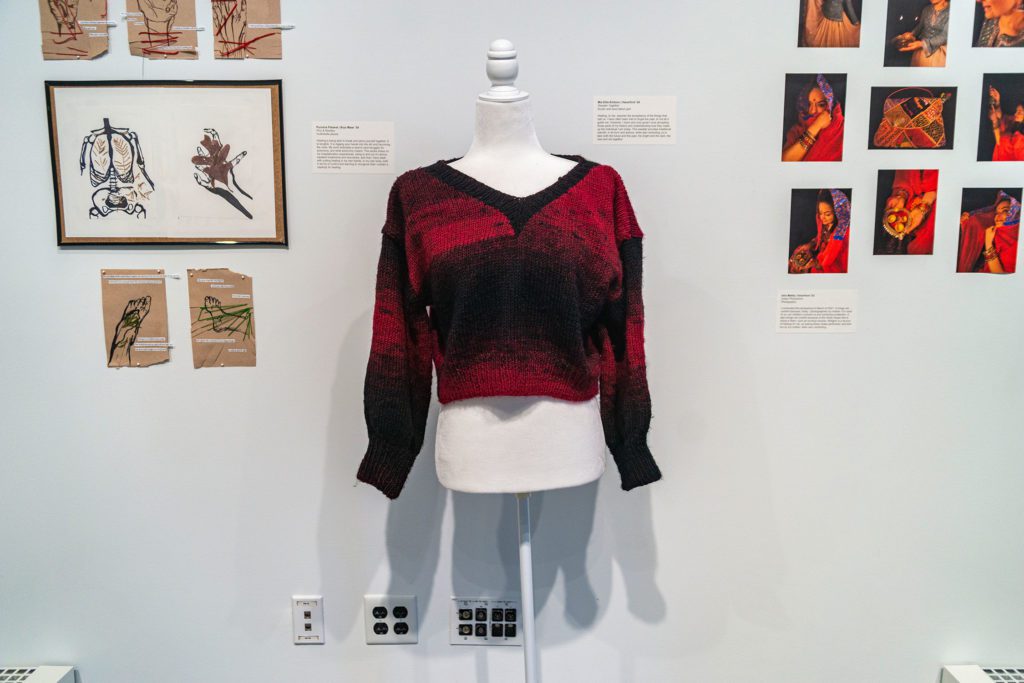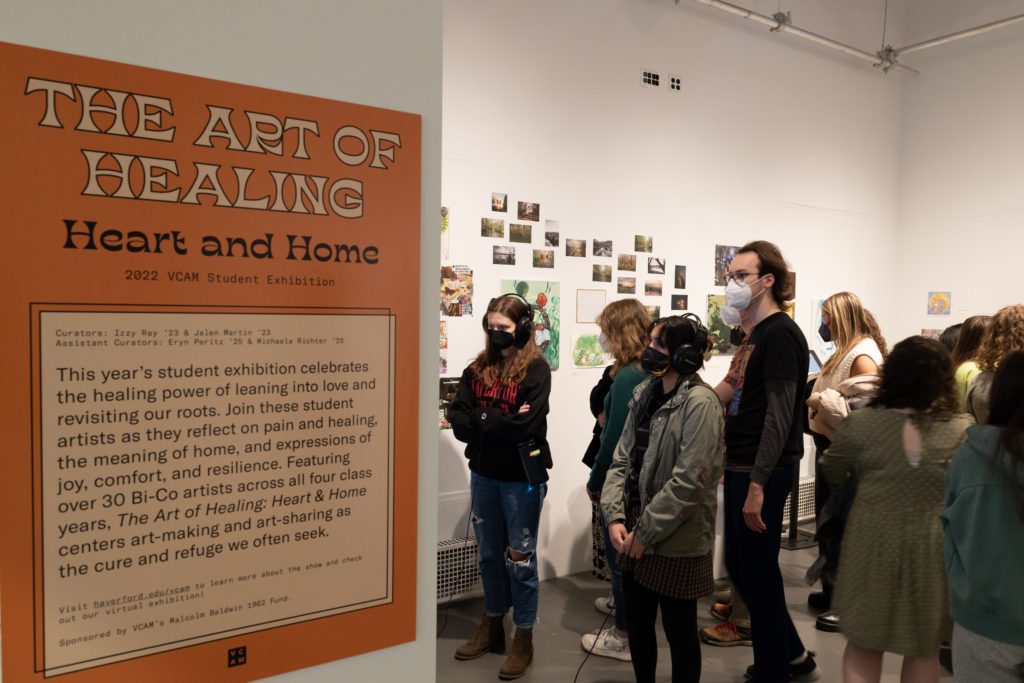Since Feb. 11, the VCAM Upper Create Space has housed the first open-call student art exhibition of the semester, The Art of Healing: Heart & Home. Displaying work from over 30 different artists from across all class years at Haverford and Bryn Mawr, this exhibit gives them a chance to share different interpretations of pain, healing, and the importance of home, joy, comfort, and resilience.
The exhibit was curated by Izzy Ray ‘23 and Jalen Martin ‘23, previous curators of In the Works, last spring’s student exhibition. This time, they were joined by Michaela Richter ‘25 and Eryn Peritz BMC ‘25, who served as assistant curators.
“We were sitting at Starbucks one day last semester brainstorming theme ideas. We both agreed that we wanted the theme to evoke positive emotions,” Martin said. “I wanted to make the exhibition about comfort and relaxation, and Izzy leaned more towards resilience and healing. We sort of combined the two ideas together into one, hence the title The Art of Healing: Heart and Home.”
Ray echoed Martin’s sentiment, describing the importance of the exhibit as a sanctuary for both the artists to express themselves and the viewer to feel at peace.
“It’s meant to be a wam, cozy, comfortable space that contrasts the typical cold, formal, and sterile feel of most art galleries, which we created by centering fiber arts, music, and comfortable seating,” she said, “I’ve always seen art-making, art-sharing, and art-viewing as healing mechanisms. Through art, we can share our thoughts that can’t be put into words, stand in another person’s shoes, or feel that we’re not alone.”
Over 30 students answered the call for submissions earlier in the winter, and the exhibit received support from the John B. Hurford ’60 Center for the Arts and Humanities in the form of high-quality printing for students who could not print their own work.
The Art of Healing: Heart & Home gathers a woven blanket, paintings, photography, textiles, poetry, sculpture, film, collages, and clothing to convey its message of healing, joy, and peace. In addition to the student work in the VCAM Upper Create Space, there are individual works in the exhibit that encourage visitor contributions, making the exhibit truly engaging.
“We created a collaborative playlist of songs submitted by members of the Bi-Co community. People submitted songs that help them heal and remind them of home,” explained Martin, the playlist’s compiler and maintainer. “The playlist soundtracks the physical exhibition. Those who would like to submit songs to the playlist can do so here.”
Similarly, Ray created a wreath of ribbons that is on display in VCAM; visitors are encouraged to write on a tag their response to the prompt, “What brings you joy?” Upon doing so, visitors can tie their tag to the wreath and contribute to the collective joy of the community.
“The wreath is already so full of things that make people happy, and we can’t wait to see more!” said Ray.
In addition to those collaborative aspects, the curators are in the process of creating a website to archive the exhibit, as well as to display virtual artwork which was not included in the physical exhibit.
Martin says that, because this was his second curatorial effort in VCAM, he felt more comfortable with the process, from organizing information and coordinating with artists, to installing the art pieces in the Create Space. Ray noted that, this time, she took great care to arrange art pieces based on their similarities, whether that similarity was the exhibit’s texture, shape, color, or medium. She also highlighted the importance of having assistant curators for the first time.
“Both Eryn and Michaela were a big help with collecting artwork and helping us hang up the physical work and object labels in the space,” she said. “Michaela helped organize the website. We also worked with Fatema Mun ‘25, our publicist, who designed graphics to help advertise the open call to encourage submissions and also advertised the exhibition opening. She’s currently conducting artist interviews that we’ll post on our Instagram account soon!”
One of the most expansive collections of artwork within the exhibit is Ray’s own contribution, “A Scar is Love.” Her piece captures the exhibition’s message of growth and healing by presenting approximately 40 photographs of scars, submitted by Ray’s family, friends, and Bi-Co Community members. Each scar is accompanied by a description and origin story. Together, all the pictures are displayed under a canopy woven to resemble collagen fibers in scar tissue.
“[The piece] celebrates the formation of scar tissue as a beautiful, biological repair mechanism that your body undergoes to heal you after you’ve been wounded. In that way, scar formation is an act of love,” said Ray.
She hopes that her piece inspires people to think of scars as proof that our body loves us and is resilient–they can be a method of telling our life stories, instead of a flaw to be ashamed of. So, she asked each person who submitted a scar picture: “How did you heal?” By submitting their scars, people were able to reflect on not just how they received the scar, but also what contributed to their healing, both physically and mentally.
Ray explained that the project was her way of encouraging people “to exchange shame for pride when it comes to wearing their scars.” This is something that she has grappled with herself. She described the recent change of perspective she had about her own scars.
“I see them as proof that I grew and healed through that pain. Healing from the wounds took a long time, but healing from the scars took even longer,” Ray said.
At its core, her piece, like the rest of the exhibit, is about how healing is a beautiful, if lengthy, process and something to be appreciated.
The Art of Healing: Heart & Home will be on display in the VCAM Upper Create Space until March 13. The exhibition’s website is still in development.


